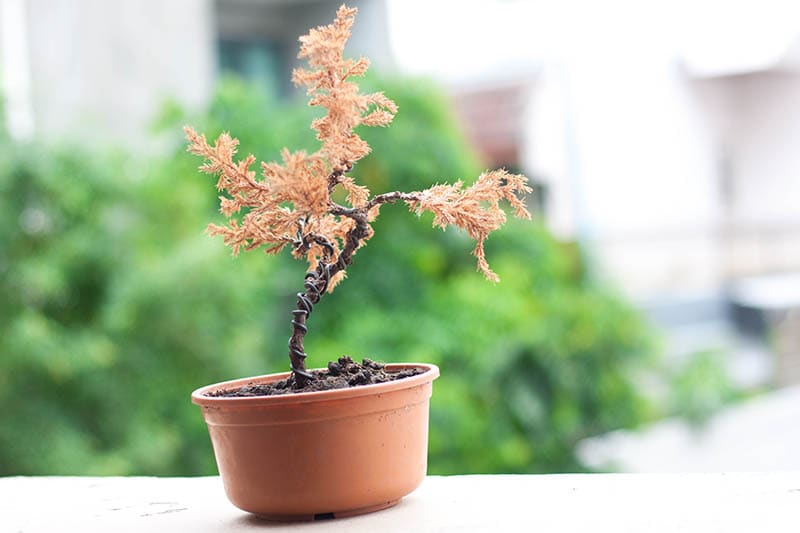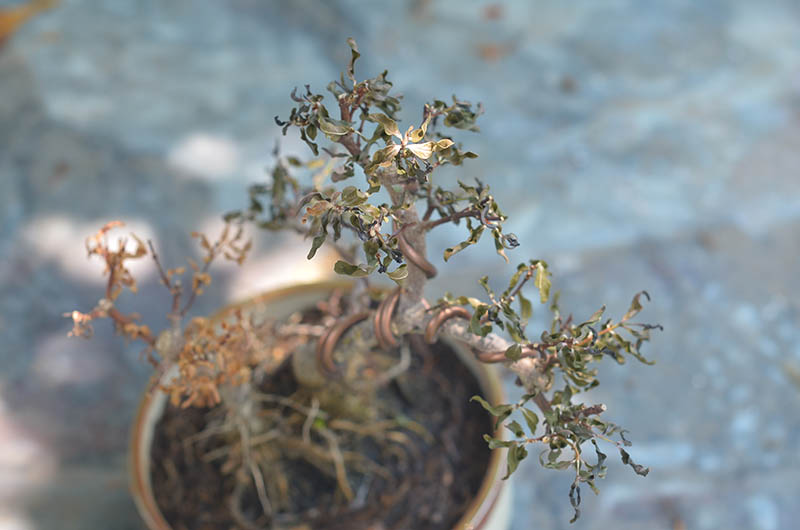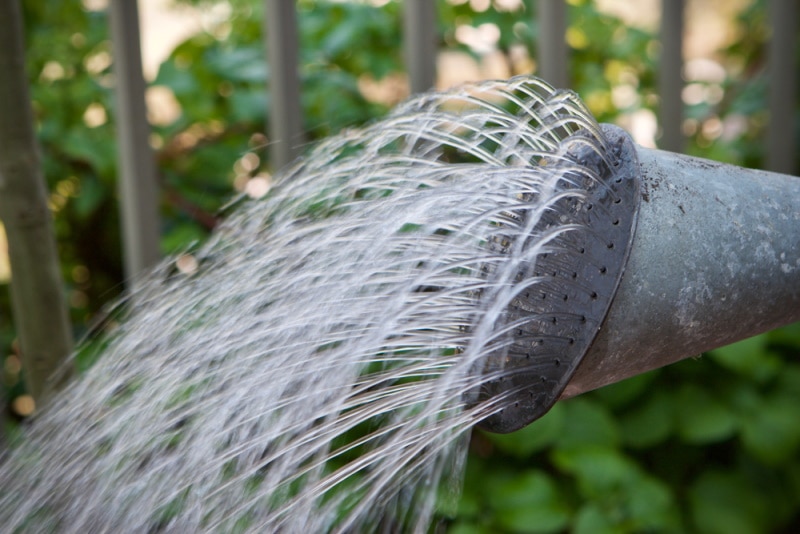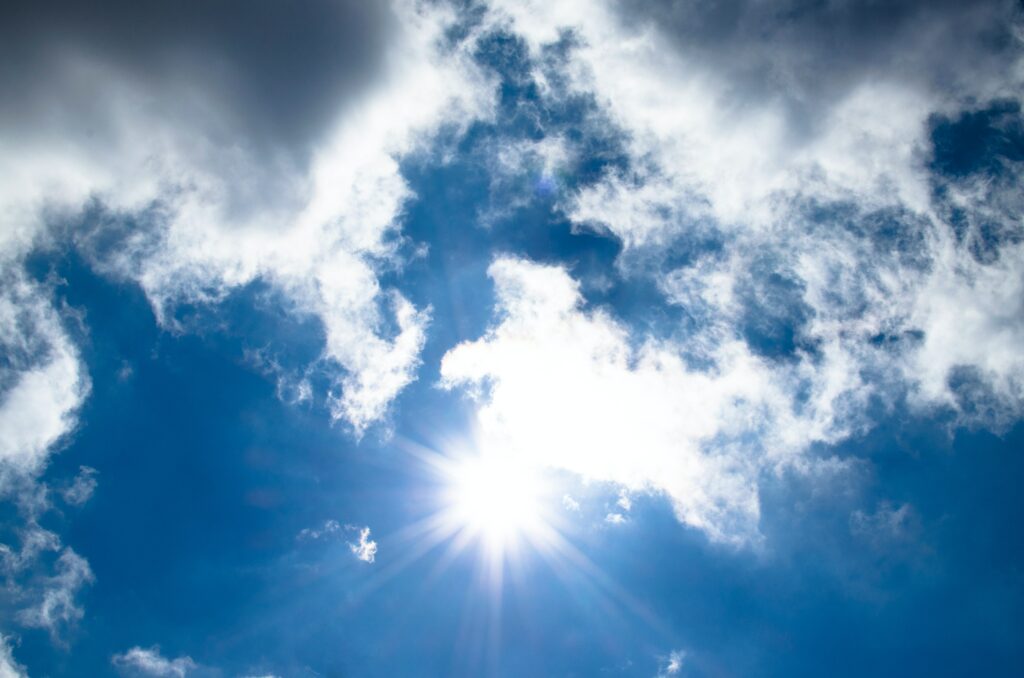Is My Bonsai Tree Dead (6 Signs to Look For)
-
Pete Ortiz
- Last updated:

Do you remember when you first conceived the idea of owning a bonsai tree? You must have spent hours on the internet looking for the perfect one for your house or local nursery. With all the efforts made, you will want to take proper care of your bonsai tree to ensure it doesn’t die.
You must be keen to notice tiny changes hindering the plant’s health. Your bonsai tree is in good condition when the leaves are bright green, the trunk is smooth, and the roots are strong and showing slightly.
If the mentioned signs are not observed on your bonsai tree, something could be wrong, and in the worst-case scenario, the tree could be dead. In this article, we will take you through signs of a dead bonsai tree, causes, and possible remedies. Keep reading for deeper insight.
The 6 Signs That Show a Bonsai Tree Is Dead
Taking care of a bonsai tree needs skills and patience. For a start, not all bonsai trees are of the same size, so you need to get adequate space depending on the size you will purchase; second, not all bonsai trees are outdoor plants. Therefore, it may not thrive in your backyard or balcony as you expected. Also, you may have acquired an indoor bonsai tree that needs lots of natural and artificial light and humidity to survive.
To know if your bonsai tree is dead, below are signs to look out for:
1. Brittle Branches

How do you know your bonsai tree has brittle branches? Hold the thinnest twig of the branch and gently apply some force on it. If the twig breaks with a sharp snap noise, your bonsai tree is dead or almost dead.
If healthy, the twig should be soft, only bending due to the gentle pressure applied to it but not breaking.
You may as well try the brittleness of larger branches. However, they may be a bit mature, breaking so easily and giving you a wrong impression of the plant’s health, so you should opt for the thinnest twig on the branch instead.
2. Excess Dropping of Leaves
Shedding of leaves does happen after some time on every plant. However, the concern comes in when the leaves keep dropping continuously. This is a sign that your bonsai plant is dying or dead.
The leaves are vital in transporting nutrients and water into the plant to sustain its energy. If they shed entirely, it only means a limited water supply and nutrients to most parts of the bonsai tree. Sometimes the leaves may shed excessively if your plant has been infested with pests.
3. Dead Trunk

If you want to know if the trunk of your bonsai tree is dead, make a tiny scratch on it with your fingernail. The scratch should reveal fresh greenish moist flesh from within. If that is not the case for your bonsai tree, the tree is dead, and the chances are, it will not be easy to revive such a tree.
The moist greenish surface only means that your tree is still alive; the roots are still transporting water and nutrients from the soil to the rest of the plant.
4. Yellowing of the Leaves
Yellowing of the leaves may be due to the shedding of leaves, which occurs seasonally to create room for newer greener leaves to grow. However, this may not always be the case. Sometimes when the number of leaves turning yellow is too much, the problem may be coming from the roots.
Most probably, the roots are not absorbing enough water and nutrients to be transported up to the leaves to keep them green and healthy. This only means that the tree will be dead sooner if not already dead.
5. Sour Smell From the Pot

Suppose you perceive some sour smell from the pot where you planted your bonsai tree; there is a chance the roots have begun to rot, or they have already rotten completely, and your bonsai tree is dead.
Too much water often suffocates the bonsai tree’s roots, creating a muddy pot that causes the plant’s roots to decompose.
6. Rotten Roots
Does your bonsai plant have rotten roots? If that is the case, the plant is dead or almost dying. Rotten roots will disrupt the normal transportation of water and minerals from the soil to the entire plant, which will eventually cause the plant to wither and die.
You will know the roots of the bonsai tree are dying when they appear too mushy, the pot too muddy, and a sour smell as mentioned in the above point.
Causes of Death of Bonsai Trees and Possible Remedies
Suppose you have already experienced the horrible loss of your bonsai tree; you may want to know possible reasons that may have led to the death of the plant. These are accompanied by possible solutions to help you if you capture the issue before it ultimately murders your plant.
For those seeking knowledge, use the information provided below to protect your plant so it does not die on your watch.
1. Overwatering

When the bonsai tree is soaked in too much water, you deprive the root of enough oxygen. Granted, both air and water are essential for the growth and production of new roots; however, when the plant is suffocating, the existing roots begin to rot, and there is no production of new roots.
Too much watering will eventually kill your bonsai plant depending on how long the roots stay soaked in water-it may take a few weeks up to a month.
Solution
Avoid bonsai trees sold in organic soil pots; avoid re-potting your bonsai plant in such a pot as well. These types of pots are known to hold too much water for too long, which leads to the soil forming compact with the pot. Once that happens, there is very little room for air circulation for the roots, and they die.
Also, have a schedule to water your bonsai tree depending on various factors such as pot size and type of soil.
Always check out the top dressing on the soil; if it is completely dry, your bonsai tree needs watering. If not, hold out on the watering.
2. Underwatering
When a bonsai tree does not get enough water, the soil in the pot dries out. The plant roots will also dry out due to the lack of water to absorb, leading to falling off and withering of the leaves. For those who own a green bonsai tree, you will notice that the leaves will no longer retain their green color; they will slowly start turning yellow.
Solution
As already discussed above, watering a bonsai plant depends on your plant type, the size of the pot, the type of soil in the pot, and the weather. Suppose your plant has already been affected by underwatering, but the roots are not completely dry or dead; you may consider re-potting.
After regaining its health, learn more about taking care of a bonsai plant so that you do not have to rescue it the second time.
3. Overexposure/Underexposure to Sunlight

The same way a bonsai tree is temperamental when it comes to watering needs is the same way it is temperamental to needing sunlight.
As much as sunlight is necessary for the growth and sustainability of a bonsai plant, too much of it will cause more damage than good, and this will be evident with the yellowing of the plant’s leaves.
Again, too little sunlight will interrupt the healthy growth of the plant. However, certain bonsai species can easily survive indoors under artificial lights like fluorescent or LED lights. Such Bonsai species include juniper or maple.
Solution
To avoid overexposure, move your bonsai plant from direct sunlight when heading to the peak hours of the day. You may place a layer of moss on top of your pot to protect it from direct sunlight.
Know the type of bonsai plant you have, as most need at least 5-6 hours of direct sunlight daily. For instance, flora bonsai plants will need that much sunlight for photosynthesis.
Sunlight is also needed for longer, especially if the plant has been infested with insect or fungal outbreaks. Therefore, do not try to place an outdoor bonsai plant indoors, as it will not survive. It needs hours of sunlight to grow and remain healthy.
At the same time, do not subject an indoor bonsai plant to harsh sunlight rays; you will only cause them to suffer and eventually die.
4. Too Much or Too Little Fertilizing
Applying fertilizer to your bonsai plant is essential; however, the process could also damage the plant. For instance, since the pot holding the plant is too little, the plant could be using up all the fertilizer, leaving the plant needing more to survive.
At the same time, since there is limited space in the pot, the fertilizer may have difficulty dissolving and diluting through the soil, which could create a highly concentrated environment for the bonsai plant.
Solution
Monitor your plant and watch for signs like yellowing leaves, browning leaf tips, black or browning roots, and wilting leaves. After noticing such changes, rinse the plant’s roots thoroughly and re-pot them in a fresh pot and soil. Gentle urea-free bonsai fertilizer is believed to be perfect for fertilizing.
5. Pest Infestation

As much as pests may seem like a speedy solvable problem, if not caught in time, they will cause the death of your bonsai plant. Among the common types of pests that you may find on your plant are weevils, spider mites, aphids, and mealybugs.
You will tell that your bonsai plant is infested with pests when you see signs like bitten leaves, rugged leaves, wilting and falling off leaves, egg sucks attached to the plant, and the pests themselves.
Solution
Identify the type of pest infesting your plant. Check the neighboring plants to see if they have also been affected; if not, make sure to isolate them. Get a pesticide specifically meant to deal with the type of pests that have infested your plant.
Is It Possible to Bring Back to Life a Dead Bonsai Plant?
Once the most sensitive parts that ensure the survival of the bonsai plant are dead, for instance, the roots and the leaves, it becomes impossible to bring them back to life. However, if you inspect the roots and they still are in good condition, you may chop off the rotten part, rinse them and re-pot the plant.
You also need to be careful not to repeat the same mistakes you made the first time if you want the plant to survive. Therefore, do not always give up on your bonsai plant just because you have seen the above signs. Try saving it, and you may give it a second chance to live.
Conclusion
There are several types of bonsai plant species. Some survive indoors with the help of artificial light and humidity, while others need direct sunlight for hours. To know whether your bonsai plant is dead or about to die, look for signs like brittle branches, excess dropping of leaves, dead trunk, yellowing of the leaves, the sour smell from the pot, and rotten roots.
Possible reasons for your bonsai tree dying could be under/overwatering, overexposure to or insufficient sunlight, and too much or too little fertilizing.
To avoid these issues, keep an eye on your bonsai plant and ensure it gets the right amount of water, sunlight, and fertilizer. This way, you can keep a healthy tree and prevent it from dying.
Featured Image Credit: Seksith Saengruan, Shutterstock
Contents


